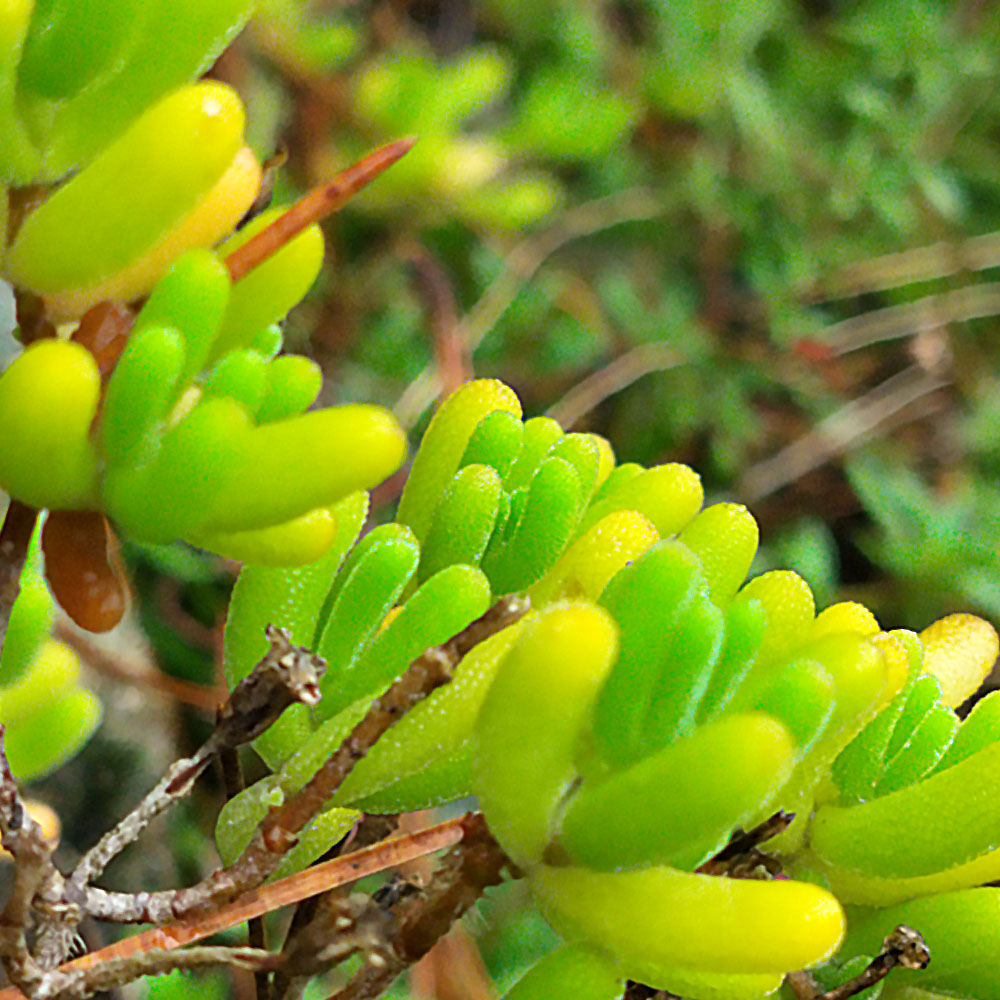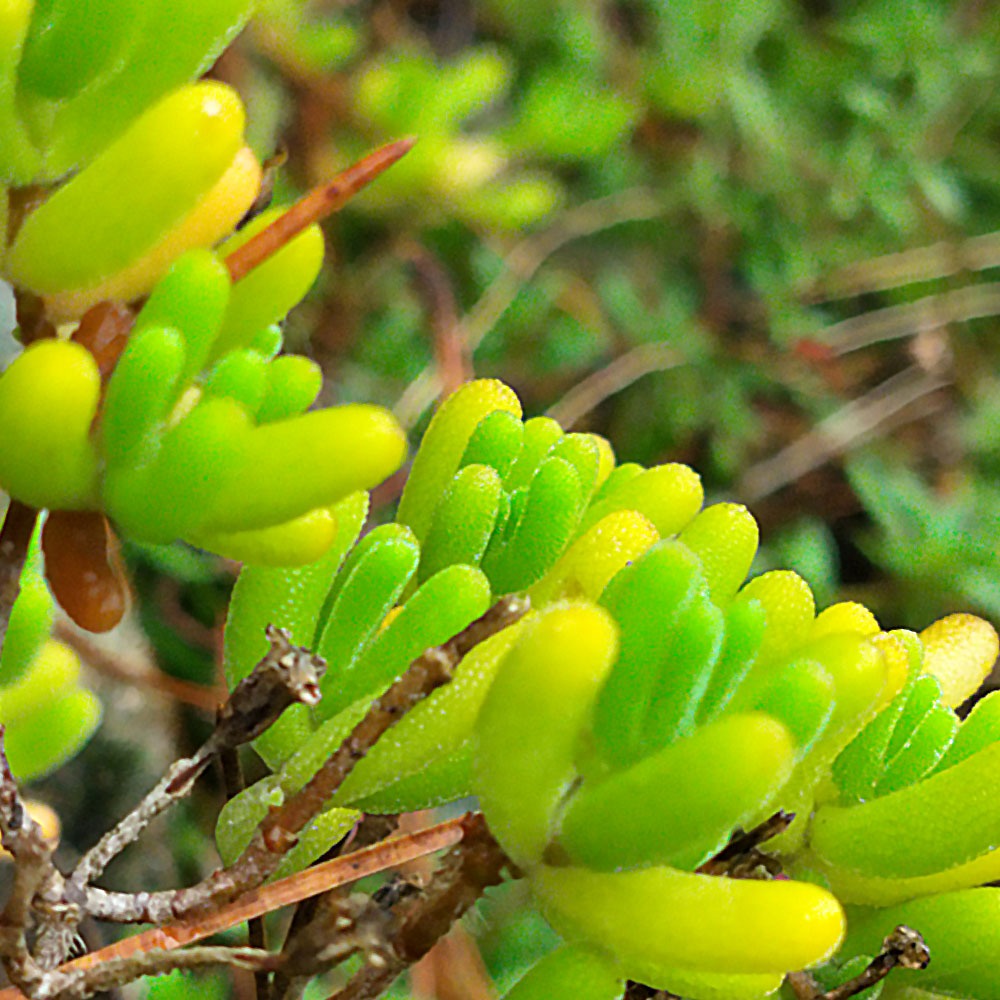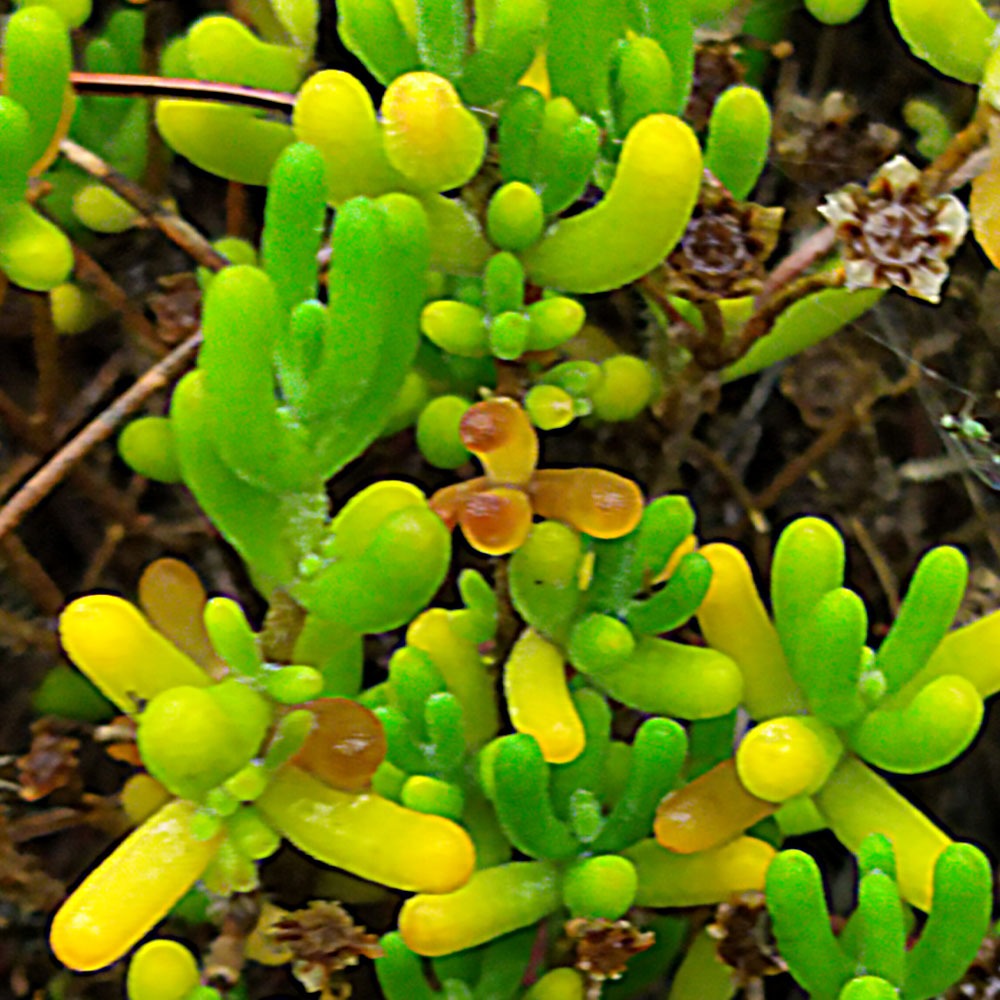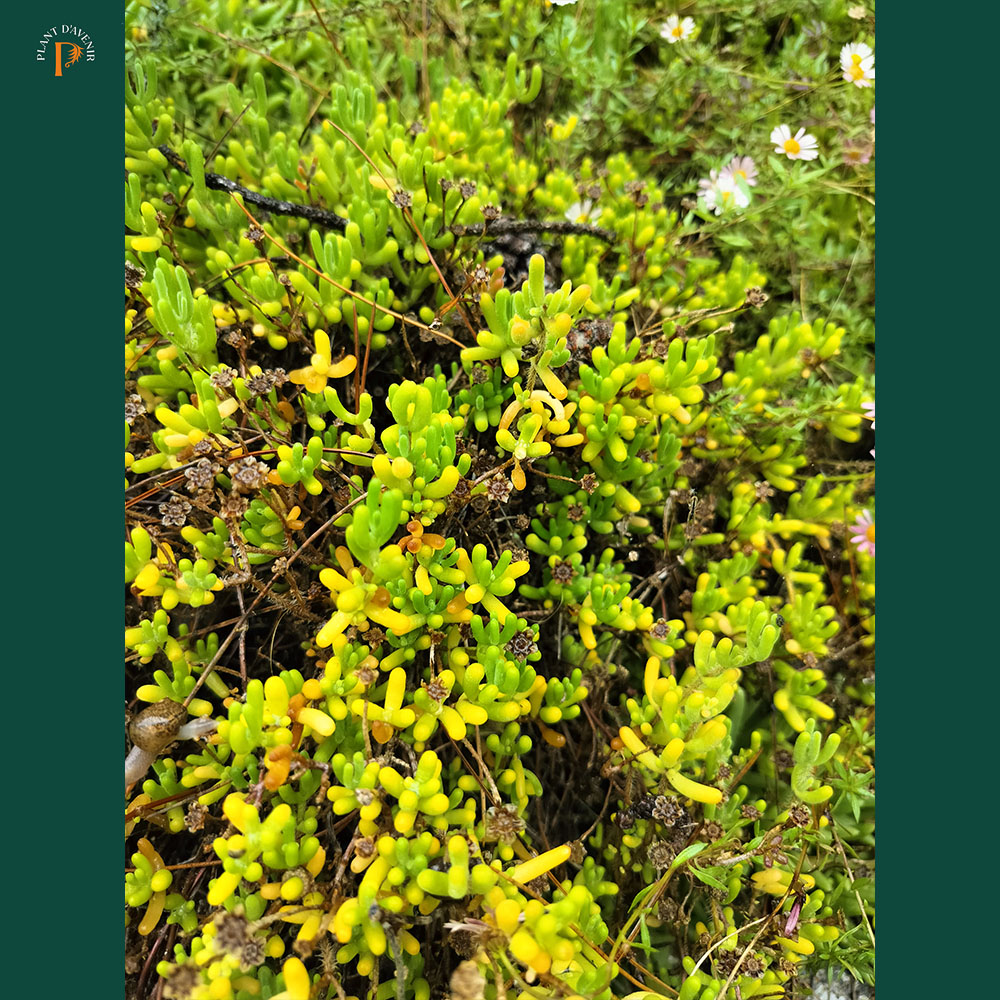No products in the cart.
Delosperma lineare
A low-growing succulent with thin, elegant leaves
Rated 0 out of 5
0 customer reviews4,90 €
Only 12 item(s) left in stock!
Tags: couvre sol, evergreen, perennial, persistant, plant, secheresse, soleil, vivace
SKU: pda291
Category: Balcony-Friendly, Bees and Butterflies, Evergreen, Frost Hardy, Ground Cover

Delosperma lineare
4,90 €
Only 12 item(s) left in stock!
Delosperma lineare is a low-growing, fast-spreading succulent with thin, elegant leaves that form a dense, carpet-like ground cover.
Its bright green, sedum-like foliage, resembling tiny caterpillars, creates a lush and weed-suppressing mat, perfect for filling bare spaces in the garden.
When in bloom, the nectar-rich flowers of Delosperma lineare attract bees and other pollinators, adding life and color to flower beds.
👨🌾GARDENING TIPS👨🌾: Delosperma lineare
- Perfect for dry, water-wise gardens, this low-maintenance plant thrives in well-drained, poor soils, making it ideal for rock gardens, slopes, and borders.
- Can grow very quickly if it likes its environment > observe carefully to prevent a full scale invasion
- Looks great with Helichrysum italicum, Verbena bonariensis, Sedum pachyclados
Learn more about gardening with Delosperma:
The Tales & The Botany: Delosperma lineare
The name Delosperma, meaning “visible seed” in Greek, refers to the transparent membranes of its fruit capsules through which the seeds can be seen.
Early European botanists were fascinated by the plants’ glistening leaves, believing that the crystals might be salt or even frozen dew, hence the enduring common name “ice plant.”
Modern botanists, however, value Delosperma for different reasons: the mechanical elegance of its seed capsules, which move with changes in humidity without any living tissue, offering insights into natural materials engineering.
Delosperma is a genus of succulent perennials belonging to the Aizoaceae, the ice plant family.
Native to southern and eastern Africa, these plants thrive in arid and semi-arid landscapes, from the rocky slopes of South Africa’s Cape provinces to the high mountains of Lesotho and Ethiopia.
They form low, spreading mats or cushions, rooting along the stems as they creep across the ground.
The leaves are opposite, fleshy, and usually cylindrical or triangular in cross-section.
Under sunlight their surfaces glisten because of epidermal bladder cells filled with water; these translucent cells scatter light and give the plants their characteristic icy sparkle while serving as miniature reservoirs that reduce water loss and leaf temperature.
I’ve taken some nice photos of Delosperma cooperi where you can really see the bladder cells twinkle and sparkle: check it out here!
Floral Morphology
The flowers of Delosperma lineare are solitary or borne near the tips of the shoots.
They open only in bright sunlight and close at night or on dull days.
Each bloom is radially symmetrical, composed of a small calyx of five sepals surrounding a radiant halo of petaloid staminodes.
These colorful, strap-shaped filaments—often magenta, violet, orange, yellow, or white—are modified sterile stamens rather than true petals > an optimization in and of itself one might add.
Delosperma lineare has bright yellow flowers.
At the center stands a tuft of fertile stamens encircling the inferior ovary.
When pollination succeeds, the ovary develops into a dry capsule that demonstrates one of the genus’s most remarkable traits: hygrochasy.
What is hygrochasy?
The opening of a fruit (or flower) in reaction to the presence of rain.
This means that the capsule carrying the seeds ONLY opens when it is moistened by the rain – closing again as it dries.
This mechanism ensures that seeds are dispersed precisely when conditions favor germination.
In-sane.
Ecology
Pollination is usually carried out by bees, flies, and butterflies attracted by the brilliant colors and reflective sheen of the flowers rather than by fragrance.
In their native habitats, Delospermas occupy niches between rocks and in thin soils where water drains rapidly.
Their compact roots and succulent leaves make them perfectly suited to such conditions, and these same adaptations have made them popular garden plants in regions with hot summers and cold winters.
Origin
South Africa
Similaire
| Weight | 0,2 kg |
|---|---|
| Flower Color | 🟡 Yellow |
| Flowering | June, July, August, September, October |
| Soil | Dry |
| Exposure | Full Sun |
| Frost Tolerance | -20°C to -25°C |
| Size | 0.2m H x 0.6m W |
Reviews
0
Rated 0 out of 5
0 customer reviews5
0
4
0
3
0
2
0
1
0
Only logged in customers who have purchased this product may leave a review.
Related Products
Melissa officinalis
A perennial plant in the mint family that is adored by bees, royal families and tea drinkers.
A perennial plant in the mint family that is adored by bees, royal families and tea drinkers.
Rated 0 out of 5
Euphorbia myrsinites
Known for its draping form of silver-gray foliage and radiant blooms.
Known for its draping form of silver-gray foliage and radiant blooms.
Rated 0 out of 5
Artemisia Valerie Finnis
A semi-evergreen, aromatic variation on the theme of Artemisia.
A semi-evergreen, aromatic variation on the theme of Artemisia.
Rated 0 out of 5
Tradescantia Blushing Bride
Gorgeous blushes of pink and white that appear in the coldest nights.
Gorgeous blushes of pink and white that appear in the coldest nights.
Rated 0 out of 5
Kalanchoe daigremontiana
A toothy succulent from Madagascar, known as the Mother of Thousands.
A toothy succulent from Madagascar, known as the Mother of Thousands.
Rated 0 out of 5
Trachelospermum asiaticum ‘Ogon Nishiki’
Jasmine with colorful foliage and lovely white flowers in summer
Jasmine with colorful foliage and lovely white flowers in summer
Rated 0 out of 5
Hieracium maculatum Leopard
A native perennial with blue-green leaves and a tall yellow flower
A native perennial with blue-green leaves and a tall yellow flower
Rated 0 out of 5
Sedum album
A low, multi-color ground cover.
A low, multi-color ground cover.
Rated 0 out of 5
Hellebore argutifolius
Winter flowering perennial with marbled blue-green leaves
Winter flowering perennial with marbled blue-green leaves
Rated 0 out of 5
Glechoma hederacea
A sweet smelling ground cover, producing little blue flowers all summer long.
A sweet smelling ground cover, producing little blue flowers all summer long.
Rated 0 out of 5
Stachys byzantina
Silky white-grey leaves and tall striking flowers
Silky white-grey leaves and tall striking flowers
Rated 0 out of 5
Erigeron kavinskianus
A daisy-like carpet of flowers
A daisy-like carpet of flowers
Rated 0 out of 5
Delosperma cooperi
A dwarf perennial known for its vermillion colored flowers
A dwarf perennial known for its vermillion colored flowers
Rated 0 out of 5
Tanacetum densum subsp amani
A shrublet composed of soft, finely divided silvery gray-white leaves.
A shrublet composed of soft, finely divided silvery gray-white leaves.
Rated 0 out of 5
Euphorbia cyparissias Clarice Howard
A Euphorbia that resembles a soft little cyprus tree
A Euphorbia that resembles a soft little cyprus tree
Rated 0 out of 5
Echinacea purpurea
A perennial with purple flowers all summer long
A perennial with purple flowers all summer long
Rated 0 out of 5
Vinca minor
Looping elegance and ability to form a low flowering ground cover
Looping elegance and ability to form a low flowering ground cover
Rated 0 out of 5
Mentha x piperita ‘Chartreuse’
A spicy mint, known for its use in the production of liqueurs and herbal teas.
A spicy mint, known for its use in the production of liqueurs and herbal teas.
Rated 0 out of 5
recent view product
Salvia sclarea – Clary Sage
A fuzzy perennial that is largely grown for its essential oil.
A fuzzy perennial that is largely grown for its essential oil.
Rated 0 out of 5
Mentha x gracilis ‘Variegata’
A striking mint with striped and flecked golden-yellow leaves that are gingery-minty.
A striking mint with striped and flecked golden-yellow leaves that are gingery-minty.
Rated 0 out of 5
Glechoma hederacea Variegata
A ground cover known for its fragrant, unusually variegated foliage
A ground cover known for its fragrant, unusually variegated foliage
Rated 0 out of 5
Dianthus plumarius Haytor White
A classic evergreen perennial with grey-green foliage and frilly, fragrant white flowers.
A classic evergreen perennial with grey-green foliage and frilly, fragrant white flowers.
Rated 0 out of 5




















































There are no reviews yet.